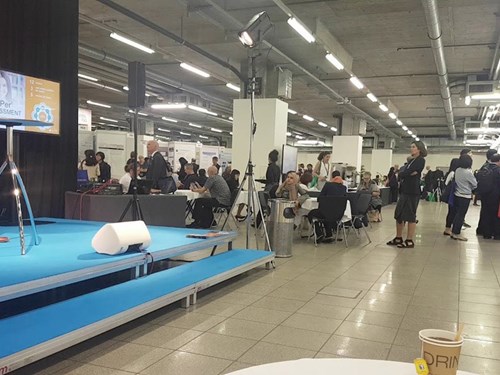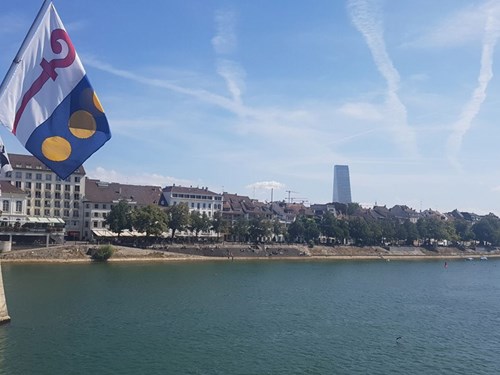
AMEE 2018: the Role of a Teacher at the Faculty of Medicine
The 45-year-old AMEE (International Association for Medical Education) presented itself once again by a congress whose focus on the pedagogy of medical and health care disciplines is indeed exceptional. This year, the meeting of more than 3,000 participants took place in the medieval city of Basel on the border of Switzerland, Germany, and France.

It is a city which, besides its museums, is also known for its very clean Rhine with a massive flow between the bridges where dozens of tourists swim while holding up bags with their clothing. As usual, the Congress took place in late August (26–29 Aug 2018), namely from Monday to Wednesday following two previous days of pre-conference workshops. The main topic, chosen by the Programme Committee, was the role of a teacher at the faculty of medicine, which was already evident from the motto: “Educating the future healthcare professional and the roles of the teacher.“
Plenary sessions
Plenary sessions are a true showpiece of every AMEE programme for which the organization, led by an ageless Professor Ronald Harden, always choose original and excellent speakers. That is why we were so taken by the performance from Bertrand Piccard, a native of Lausanne, Switzerland, whose carrier combines the work of a psychiatrist and the mission of a discoverer. The man, who has performed the longest flight in a hot air balloon (> 40 days) and flown around the globe on a solar-powered aircraft, had certainly no problem making his speech confident and plausible while pointing out, besides other ideas, that great things can not be achieved without teachers who reject no questions and encourage natural curiosity.
The other two plenaries – on Tuesday and Wednesday – could hardly outshine the introductory performance. Although Professor Hedy Wald of Boston took on an unusual stage entry with dancing elements alongside the popular funk groove "Celebrate the Moment – Come on!", her topic of Resilience and Wellbeing seemed rather useless and performance far too American – not very trustworthy indeed. On the last day, Ayelet Kuper of Toronto took the stage and appealed in her moderate speech that the training of physicians did not omit, for the science itself, the social and human aspects of their future vocation.
Interesting findings from parallel sections
Since more than twenty parallel sections were held at each moment of the programme, it was difficult to choose the right one. Undoubtedly, the highest quality at AMEE belongs to workshops and short communications – the rooms with these sections are often difficult to get into, even in the late afternoon. Symposiums, e-posters, roundtables, and standard posters lagged behind in their quality, and it was often more useful for us to visit interesting soapbox presentations and exhibitors' stands. Following is a mix of interesting findings and various lessons:
At the associated St George's University of London, anatomy practice makes use of body models and their parts which they print themselves on 3-D printers while using photometry for model data acquisition, which is cheaper than 3-D scanning.
The OSCE methodology is used to assess student performance in schools across Europe and the world. Other methodologies and structured evaluations are developed alongside, e.g. MiniCEX (Clinical Evaluation Exercise).
Training in clinical decision-making also takes various model structures to grasp the reflection phenomenon that is critical to clinical reasoning.
High fidelity simulations can be done not only with mannequins and trainers, but also through more inexpensive means like virtual reality (VR), augmented reality (AR), and mixed reality. However, we left the workshop with mixed feelings believing that it will certainly take some time for VR / AR to find their place in education.
Prevailing in the field of didactic methods that support the active role of the student in the process of learning – problem-based learning (PBL) and team-based learning (TBL) – is better experience with the younger TBL method, with some institutions demonstrating their ideas by well-published record in renowned journals (e.g. recent brilliant work by Burgess A. et al. Team-based learning (TBL) in the medical curriculum: better than PBL?, BMC Medical Education, 2017). The important aspects of the TBL incoming supremacy include too much cognitive load placed on students in PBL, higher efficiency of human resource utilization (tutors) in TBL, unequal student conditions in the purely PBL-based curriculum.
Finally, we appreciate the high informational value of the Congress and its contribution to our SIMU / Akutne.cz / MEFANET team, not to mention our personal development. We look forward to the next AMEE congress scheduled for 2019 in our former capital – Vienna.





